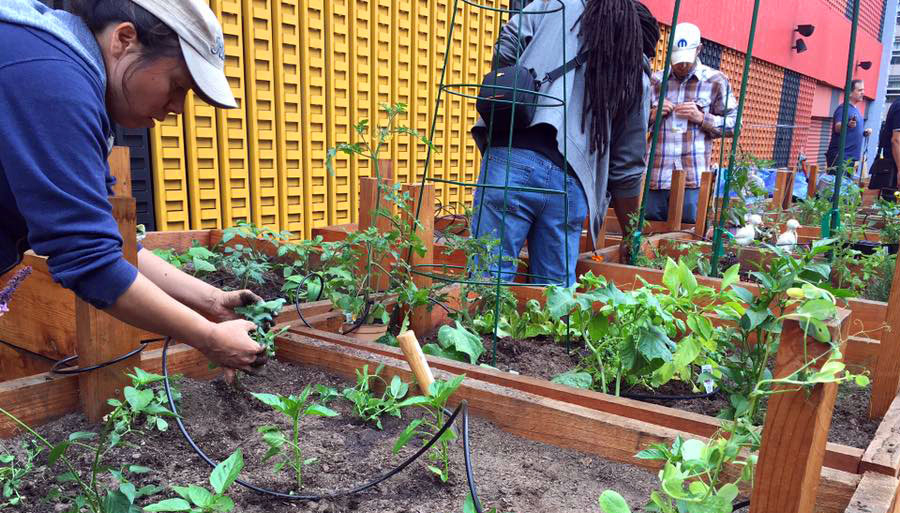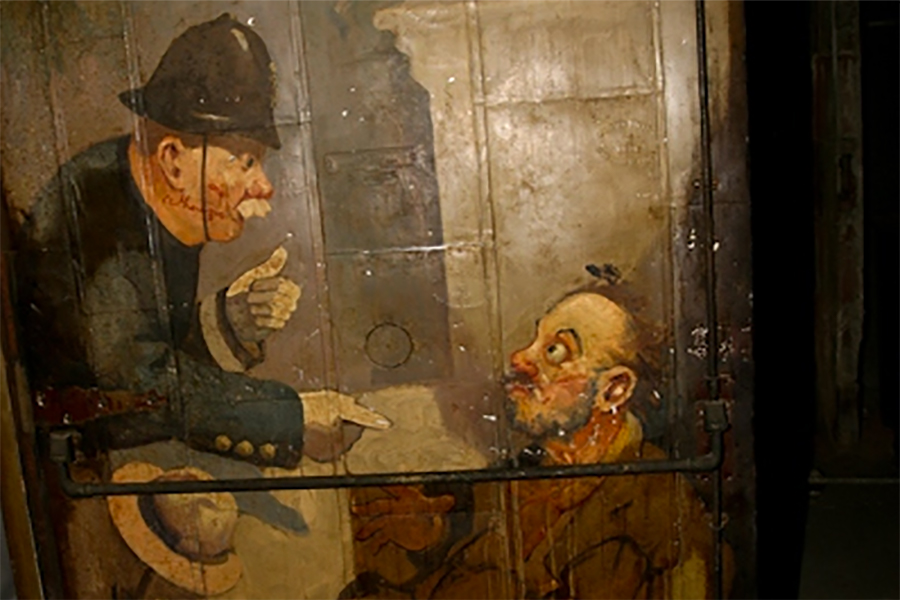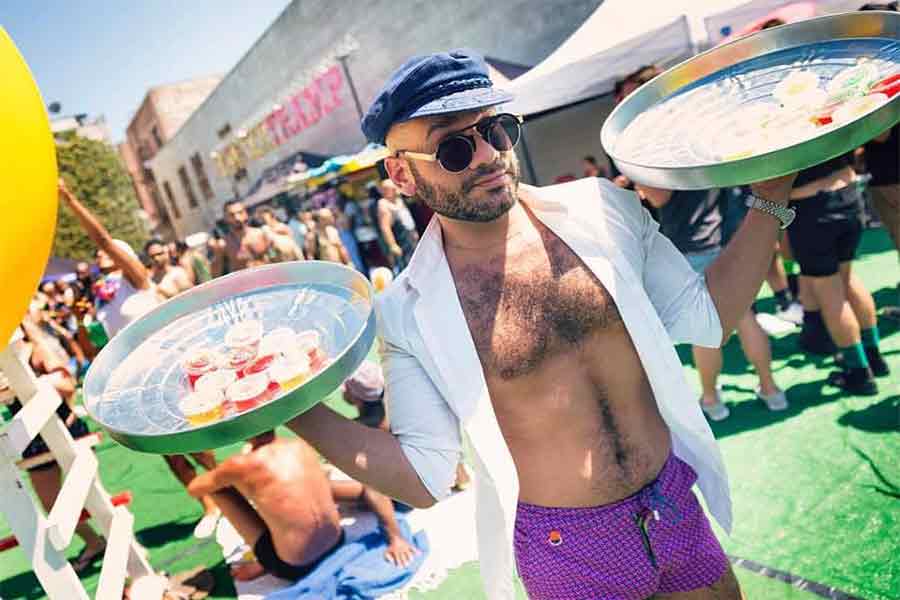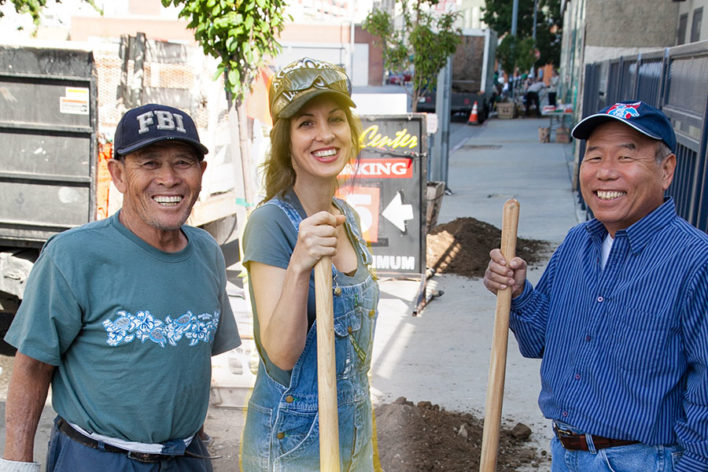
The needs of Skid Row are many and meeting them has proven to be no easy task. Where few have tried, many have failed. While photo ops, good deeds and yearly visits make for great scrapbook pages, the real Skid Row heroes are the most dedicated Skid Row Activists who devote their entire lives to ensure positive change inside their own community. Standing at the crossroads of that change are DTLA Skid Row Heroes.
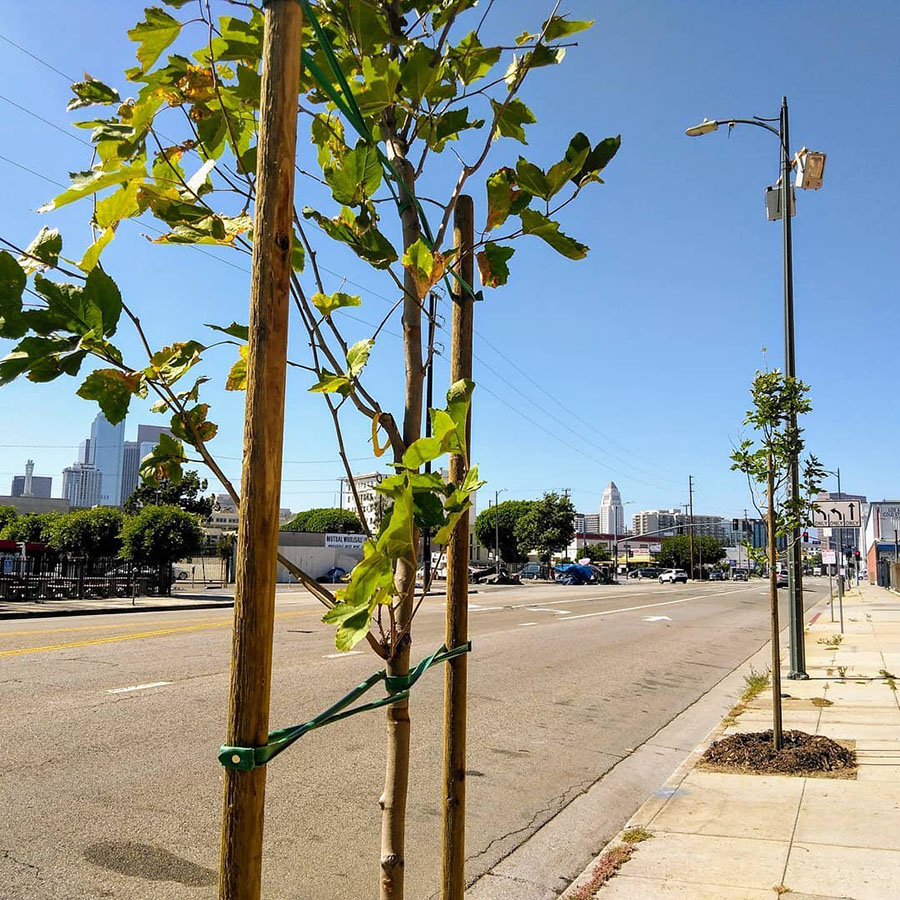
If you consider yourself part of the DTLA community, you’ve probably heard the battle cries of Skid Row Activist Katherine McNenny.
As an outspoken activist for Skid Row and a member of the Skid Row Neighborhood Council Formation Committee, Katherine McNenny is confident and brash and pulls no punches when it comes to fighting for change and calling out those she feels are standing in the way.
“I am trying to get in where I fit in,” she says. “I don’t consider myself an activist; I consider myself a neighborhood advocate.”

Katherine is a production patternmaker with a specific interest in women’s sportswear but is far more famous for her activism.
Having settled in Downtown LA in 2009, McNenny’s jobs in the garment industry for the past 20+ years, have mainly been in the industrial sections of the downtown, which is why this particular area is in her heart and mind.
Her concern with the lack of trees in Skid Row led her to cofound Industrial District Green in June 2013. Industrial District Green (IDG) continues with the mission to improve the livability of the DTLA Industrial District through the implementation and maintenance of community-based greening. A mission that includes opening space projects while engaging under-served members of the community via education and outreach programs.
Landscape architect Gabrielle Newmark soon joined and professionalized the organization. Yet, even before this, Katherine had dedicated herself to greening. She adopted 27 “orphaned” trees in 2009 along Alameda Street, planted 7 trees for the first time along San Pedro St in December 2010 after 12 months of laborious preparation, and also planted 19 trees alongside Boyd & Omar Streets in April of 2013.
In all, IDG has successfully planted over 230 trees under their care and they are still planting.
“I like to do things with my hands and craft things that I can see. With making patterns, I help the designer bring their design to life in a physical form – a garment. I find great satisfaction in this. Similarly, with planting trees and watching them grow, there is a physical nature to this that I enjoy. I have found that this is a universal feeling of pleasure for human beings.”
The Battle for Representation
When it comes to Skid Row activism, McNenny exhaust her energy cutting through the red tape that she and many other Skid Row activists have faced that they feel help keep the area in its current state.
For instance, for the past few years, Skid Row’s low-income and homeless residents have struggled to form the Skid Row Neighborhood Council.
She explains the need for it: “While not perfect, the neighborhood council system is an excellent way for communities in Los Angeles to amplify their concerns to City Hall and support each other. Skid Row is such a unique place with so many longstanding and dynamic activists already here; having our own neighborhood council seems like a no-brainer.”
“We just have not been well-served connected to the Downtown Los Angeles Neighborhood Council (DLANC).”
However, Katherine has seen significant pushback. A proposal in April 2017 to create the council was narrowly voted down by DTLA residents (but the City has not been able to authenticate the votes, she explained). Katherine suspects that various downtown business improvement districts (BIDs) stopped the NC’s creation, and she, along with activist Adrian Riskin have tried to expose this.
And then there’s her battle with LA Urban Forestry
Recently Katherine criticized the LA Urban forestry program of giving citizens free trees with the goal of planting 90k by 2021.
She believes that this program fails to target lower-income communities that need trees the most. It is better, according to her, for the city to take over tree care and organize crews for this work, and for the city’s urban forestry funding, which is currently $25.4 million, to increase to between $70-80 million.
Katherine also requests that the DTLA citizenry take the initiative by writing to their Council Person about prioritizing this funding, and by attending the City’s Community Forest Advisory Committee (CFAC) meetings to learn more about their neighborhood’s urban forest and their CFAC representative.
Rachel Malarich, the city’s first-ever forest officer, has prioritized getting trees to more needy communities. Urban Forestry has also launched its Tree Inventory and the Tree Guarantee Planting Plan. In contrast Something Katherine finds exciting is that a new crop of “tree” activists has risen, including Jill Stewart, the Neighborhood Council Sustainability Alliance and Angelenos for Trees.
What Makes Her Tick?
Katherine’s advocacy for Skid Row paid off in 2015 when she became an LA Pioneer Woman, with Jose Huizar, the 14th District City Councilman, lauding her: “Katherine has shown time and time again that she is an agent for change”.
Covid Won’t Stop Her!
Katherine says the pandemic further proves the need for the SRNC:
“Skid Row activists got to work IMMEDIATELY to feed people (donations are down from those who normally bring food) and demand safe living conditions for shelter residents, over 100 of which tested positive for the virus.”
With Skid Row seeing City, County and shelter CEOs acting WAY too slow, meanwhile uncovering that DLANC decided to use a bulk of their “emergency funding” to feed the LAPD, even though the Mayor declared no police officers would lose their jobs next year, further establishing grounds for the disconnect and adding insult to injury.
Currently, Katherine cannot work as a pattern maker due to Mayor Garcetti’s “Safer at Home” order. But IDG has mostly been able to continue planting due to exemptions in the Mayor’s Order.
Planting during COVID lockdown: Not all a piece of cake: social distancing also forbids planting in areas with high foot traffic so activities there will be delayed. But rest assured that IDG has not forgotten them.
It can also be a ripe time to plant: since the roads and sidewalks are emptier, the trees can spread their roots peacefully.
For more information visit www.industrialdistrictgreen.org

